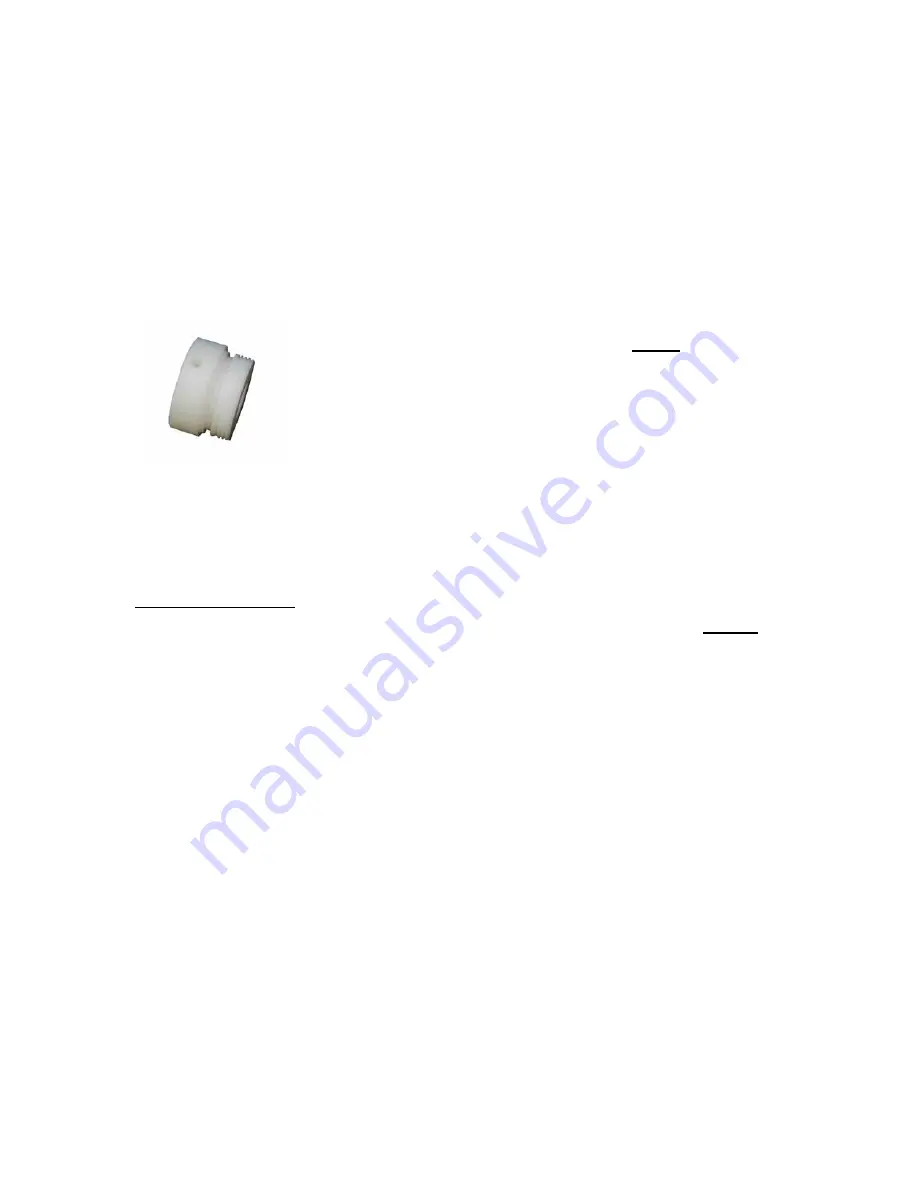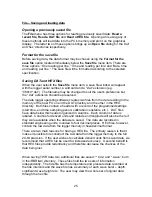
10
Give particular attention to the following areas:
•
The surface of the O-ring itself
•
The mating surface on the inside of the case between the threads and the
open end
•
The inner surfaces of the groove in the end cap where the O-ring sits
•
The mating surfaces for each removable sensor
•
The underwater connector for external power or data transfer (
if used
)
Any dirt present should be removed by wiping thoroughly
with a soft, lint-free cloth. When cleaning,
never
use any
material or tool which could scratch the O-ring or any of its
mating surfaces. If any dirt is present in the O-ring groove,
then the O-ring should be removed as described below to
allow thorough cleaning of the groove.
If an O-ring needs to
be removed for any reason, it should be
replaced
.
If the O-ring is scratched, cut, distorted, perished or
defective in any other way it must be replaced. If any of the
surfaces of the O-ring groove are scratched, pitted or
otherwise damaged, the logger may need to be returned to
RBR for refurbishment: please contact us for advice.
Replacing an O-ring
1)
Lever the O-ring from its groove. Use a soft plastic or wood tool;
do not
use a metal screwdriver or any other tool which may scratch the
surfaces of the O-ring groove
: doing so will probably render the end cap
useless. Slide the O-ring out of its groove and off the logger. The O-ring
may need to stretch quite a bit as it is pushed off; this requires some effort
but can be done by hand.
2)
Thoroughly clean the O-ring groove, taking great care not to scratch or
damage it in any way. Inspect it carefully, and contact us for advice if it
appears damaged. Apply a light film of silicone grease to all three inside
surfaces of the groove, being careful not to trap any dirt, hairs or lint.
3)
Select the proper O-ring (consult
Appendix B
(p.45) for O-ring sizes) and
make sure it is not damaged. Lubricate it with a very light film of silicone
grease to ease its installation.
4)
Install the new O-ring by pushing it into place and popping it into its
groove. The O-ring may need to stretch quite a bit as it is pushed on; this
requires some effort but can be done by hand.
5)
When the new O-ring is in place, inspect it once more for scratches and
dirt, and wipe away any silicone grease deposited on the end cap.
Most experienced users of oceanographic equipment replace all O-rings before
every deployment as a matter or routine. The cost of an O-ring is negligible










































